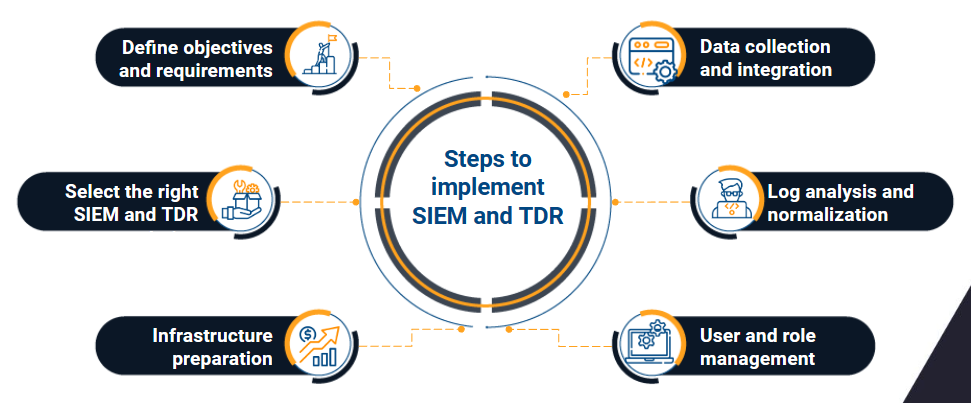The security of a software product is not something that should be taken lightly, so implement a SIEM, or Security Information and Event Management, and TDR, which stands for threat detection and response, process.
SIEM is a comprehensive approach to security management that combines two key components: Security Information Management (SIM) and Security Event Management (SEM). SIEM systems provide real-time analysis of security alerts generated by an organization's various hardware and software infrastructures.
SIEM Components
- Security Information Management (SIM)
SIM focuses on collecting, storing, and analyzing log data from an organization's various devices, systems, and applications. These logs contain valuable information about the activities and events that occur on a network, such as user login attempts, file access, system changes, and more.
- Security Event Management (SEM)
SEM is responsible for real-time monitoring and analysis of security events and alerts generated by data collected by SIM. Correlate and aggregate this data to identify patterns and anomalies that may indicate security threats or incidents. SEM also provides real-time alerting and reporting capabilities.

Steps to implement SIEM and TDR
Implementing security information and event management (SIEM) and threat detection and response (TDR) systems involves several steps. SIEM and TDR are critical components of a robust cybersecurity strategy that help organizations monitor, detect, and respond to security threats.
Below is a high-level overview of the deployment process:
Define objectives and requirements
Identify your organization's specific security needs and objectives. Define the scope of your SIEM and TDR implementation, considering factors such as network size, data volume, and number of endpoints.
Select the right SIEM and TDR solution
Do your research and choose the right SIEM and TDR solution that fits your requirements, budget, and technical infrastructure.
Infrastructure preparation
Ensure your network and IT infrastructure are ready for SIEM and TDR implementation. This may include configuring network devices, configuring log sources, and ensuring network connectivity.

Data collection and integration
Configure SIEM and TDR to collect logs and data from various sources, such as firewalls, IDS/IPS, servers, endpoints, and applications. Integrate SIEM and TDR with data sources, whether through agents, connectors, or APIs.
Log analysis and normalization
Configure log normalization and analysis rules to convert different log formats into a common format for analysis.
Create use cases and detection rules
Define security use cases and detection rules to identify suspicious or malicious activity. Configure correlation rules, alerts and thresholds for different events.

Incident response planning
Develop an incident response plan that outlines how your team will react to alerts and incidents detected by SIEM and TDR.
User and role management
Configure user accounts and roles for SIEM and TDR, ensuring the right personnel have appropriate access.
Tests and adjustments
Perform testing to ensure that SIEM and TDR effectively detect and respond to threats. Continuously adjust detection rules and alerts based on real-world data and feedback.

Training and Awareness
Train your security team and relevant personnel on how to use SIEM and TDR effectively. Promote security awareness among employees to assist in incident notification and response.
Monitoring and Response
Regularly monitor SIEM and TDR dashboards and alerts for potential security incidents. Establish an incident response process to investigate and mitigate any detected threats.
Continuous improvement
Continuously evaluate the effectiveness of your SIEM and TDR implementation and make necessary improvements.
Integration with other security tools
Integrate SIEM and TDR with other security tools and technologies to improve your overall security posture.
The implementation process may vary depending on the specific SIEM and TDR solutions you choose, the unique needs of your organization, and the complexity of your IT environment. It is essential to approach SIEM and TDR implementation as an ongoing process, as the threat landscape continually evolves, and your security systems must adapt accordingly.
We recommend you on video


